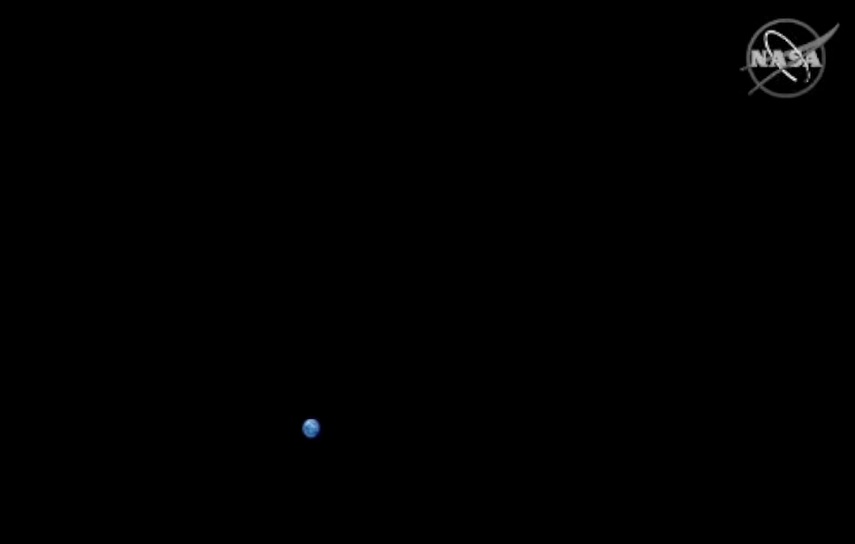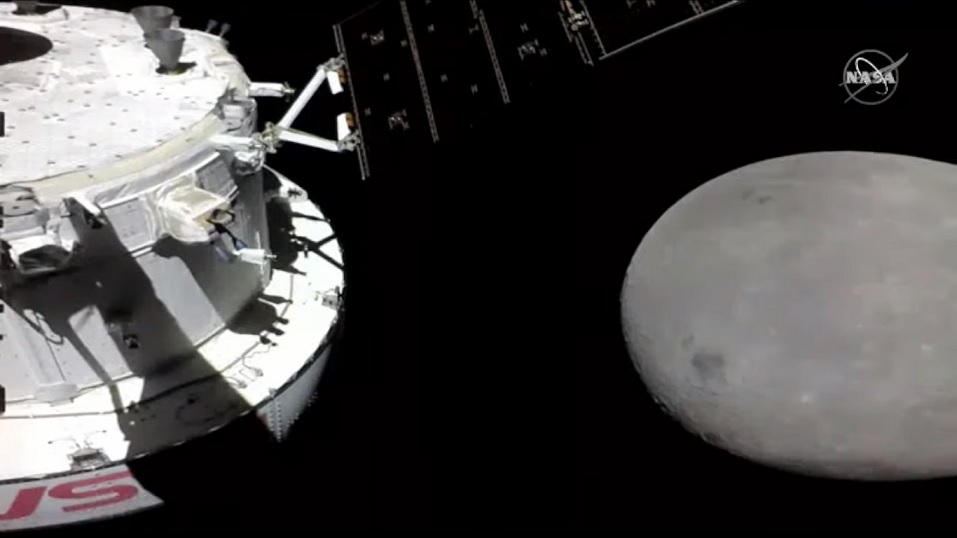Orion re-acquired signal with NASA’s Deep Space Network at 7:59 a.m. EST after successfully performing the outbound powered flyby burn at 7:44 a.m. E
Orion re-acquired signal with NASA’s Deep Space Network at 7:59 a.m. EST after successfully performing the outbound powered flyby burn at 7:44 a.m. EST with a firing of the orbital maneuvering system engine for 2 minutes and 30 seconds to accelerate the spacecraft at a rate of more than 580 mph.

At the time of the burn, Orion was 328 miles above the Moon, travelling at 5,023 mph. Shortly after the burn, Orion passed 81 miles above the Moon, travelling at 5,102 mph. At the time of the lunar flyby, Orion was more than 230,000 miles from Earth.

The outbound powered flyby burn is the first of two maneuvers required to enter the distant retrograde orbit around the Moon.
The spacecraft will perform the distant retrograde orbit insertion burn Friday, Nov. 25, using the European Service Module. Orion will remain in this orbit for about a week to test spacecraft systems.

The distant retrograde will take Orion 40,000 miles past the Moon before it returns to Earth. Orion’s greatest distance from the Earth will be Monday, Nov. 28 at 3:05 p.m. CST at more than 268,500 miles. Orion’s greatest distance from the Moon will be on Friday, Nov. 25 at 3:53 p.m. CST at more than 57,250 miles.
All Credit to: NASA.gov


